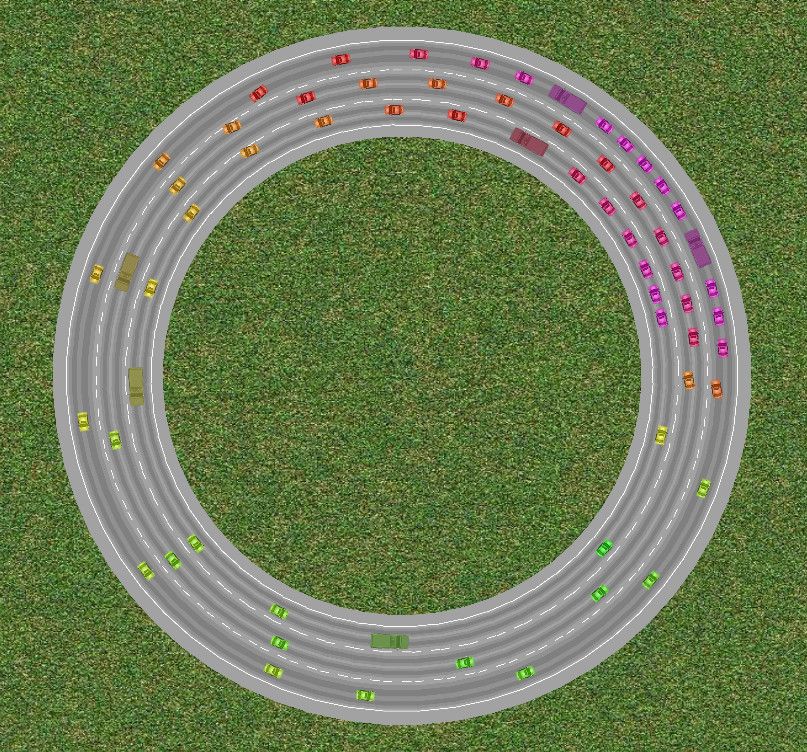Enhancing Navigation with Google Maps Traffic Simulator
Google Maps Traffic Simulator

Google Maps is a powerful tool for getting around town and finding the fastest routes. It uses a combination of historical traffic patterns based on how fast cars travel a road at certain times on certain days and real-time data sent from sensors in phones and vehicles.
Routific’s mobile app includes a link to Google Maps for navigation between stops. Google Maps estimates routes based on live traffic data.
How it works
Google, Apple, and other GPS mapping apps use historical records of vehicle speeds to determine traffic conditions for a road. They also use data gathered from each phone’s location services, which send anonymous information back to their servers.
These algorithms are not perfect, though. They often misinterpret a slow moving road as a traffic jam, and they can’t account for the peculiarities of a given neighborhood. For example, the steep road that Weckert used to fake a traffic jam is actually a residential street with low speed limits and parking on both sides.
Despite this, these technologies can still be useful to drivers. Apps like Routific give drivers a link to a Google Maps route that uses live traffic estimations between stops. This allows them to avoid the worst parts of a commute and save time on their trip home. This is a significant improvement over previous technologies. However, these rerouting apps don’t have the same power as maps.
What you can do with it
Using Google Maps’ built-in traffic feature, you can view real-time road conditions in supported geographic areas. Simply enter a destination and select a route to see how long it should take to drive there in current traffic conditions. The program will even color-code roads based on traffic intensity.
Google also relies on reports from app users to estimate traffic conditions. This is called crowdsourcing and involves collecting data from lots of people quickly and accurately. App users can report traffic incidents, including crashes, slowdowns, and speed traps. Google Maps will then display these in a dedicated traffic layer.
To access this feature on the Google Maps website or mobile app, click the “Layers” button and then select “Traffic.” You can zoom in and out and choose alternate routes if available. You can also turn on navigation for a personalized, turn-by-turn guide. This simulation is a great way to practice your driving skills before heading out on the road.
What you can’t do with it
While Google Maps will automatically show traffic levels on a planned route when you map out directions, it won’t display those levels across all roads. To see that information, you can enable a “traffic overlay” that displays current traffic conditions on all streets (although you might not be able to see them in all cities).
While this feature is powerful, it’s worth noting that Google doesn’t warn you of potential delays when you set a departure time or plan a trip. Moreover, Google’s traffic information isn’t updated in real-time so arrival times can change dramatically due to things like unforeseen road closures or sudden weather downturns.
Nevertheless, the feature is still a cool hack and one that could make planning your next trip more fun. If you’re interested in trying it out, the app is available for both Android and iOS devices. Just be sure to use it responsibly. Remember, it’s a simulation after all!
Conclusions
Google Maps is a free application that provides live traffic information, navigation, and location tracking. It is used by people around the world to navigate and find their way. It uses multiple sources of data to provide up-to-date information on road conditions, such as real-time reports from drivers, nearby cell towers and WiFi hotspots, road closures reported by government agencies, and historical traffic patterns.
It also analyzes and predicts traffic based on past trends, including holidays, rush hour, and seasonality. However, it is not able to account for small details, such as jaywalkers, bikers, truckers, or the weather, which can have a huge impact on traffic. It can only be as accurate as the data it has access to.

Leave a Reply